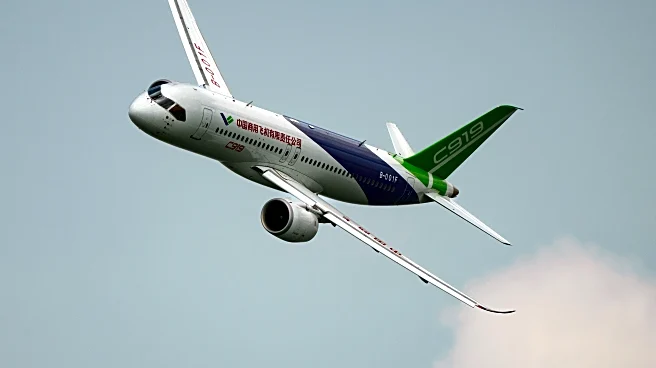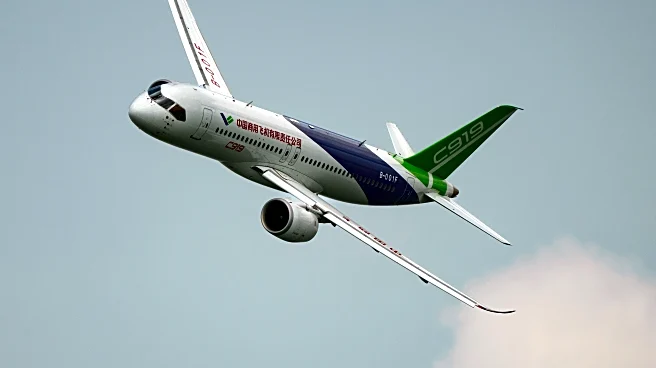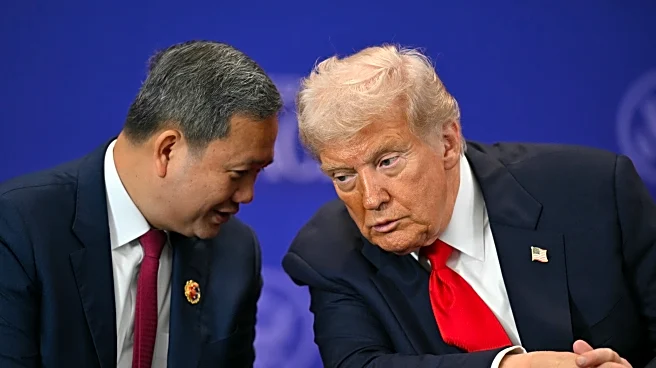What's Happening?
China's state-owned aircraft manufacturer COMAC is facing challenges in delivering its C919 passenger jets due to ongoing trade tensions between the U.S. and China. The C919, intended to compete with Boeing's
737 and Airbus's A320, relies heavily on Western components, with 48 major suppliers from the U.S. and others from Europe. Trade friction has led to disruptions in securing essential parts, such as the LEAP-1C engines, which require U.S. export clearance. Despite plans to deliver 30 jets in 2025, only seven have been delivered this year, highlighting the impact of geopolitical tensions on production schedules.
Why It's Important?
The delays in the C919's production underscore the broader implications of U.S.-China trade tensions on global industries. COMAC's reliance on Western components makes it vulnerable to export restrictions, affecting China's ambitions to reduce dependency on foreign technology. The situation highlights the geopolitical risks in international trade and the challenges faced by countries attempting to establish technological self-reliance. The C919's success is crucial for China to meet its growing domestic demand for aircraft and to expand its presence in the global aviation market.
What's Next?
COMAC aims to reduce reliance on foreign components, but this process is complex and time-consuming. The development of China's own engine alternative, the CJ-1000A, is still underway. International certification for the C919 is necessary for global expansion, but this could take years. Meanwhile, Airbus is increasing its production capacity in China, posing further competition. Analysts predict that COMAC may establish regional exports by the late 2020s, but breaking the Boeing-Airbus duopoly will be challenging.
Beyond the Headlines
The C919's production issues reflect the strategic importance of technological independence in the face of geopolitical tensions. The aircraft's development is not only a commercial endeavor but also a symbol of national pride and technological advancement for China. The situation raises questions about the future of global supply chains and the potential for increased regionalization in manufacturing.












